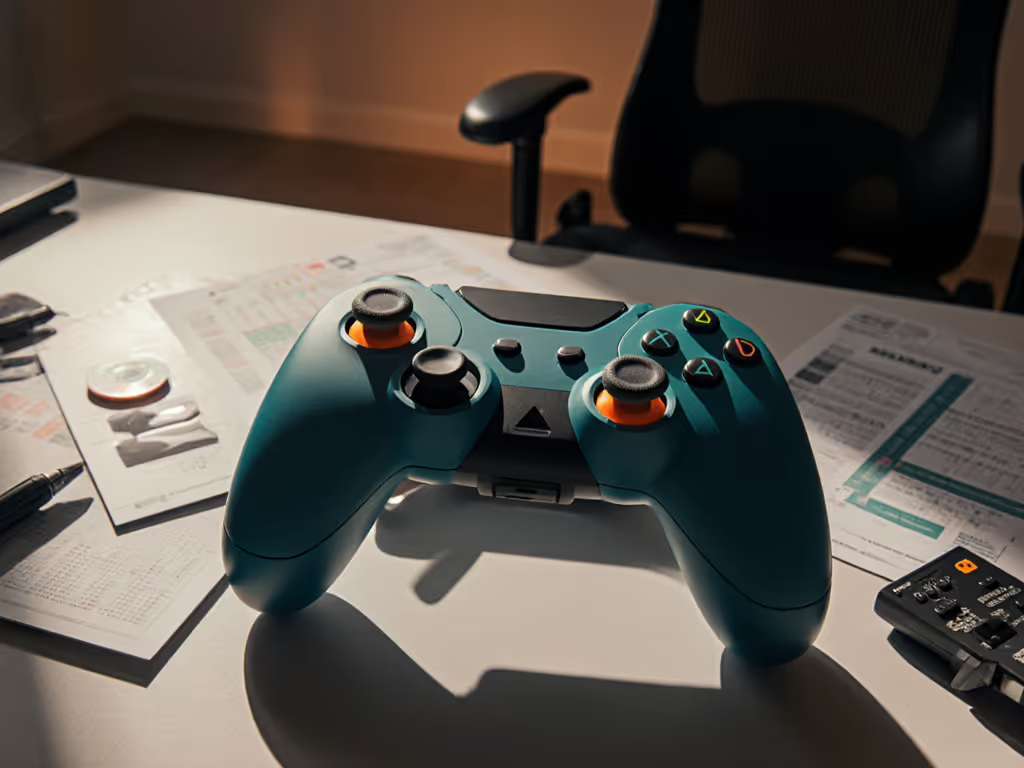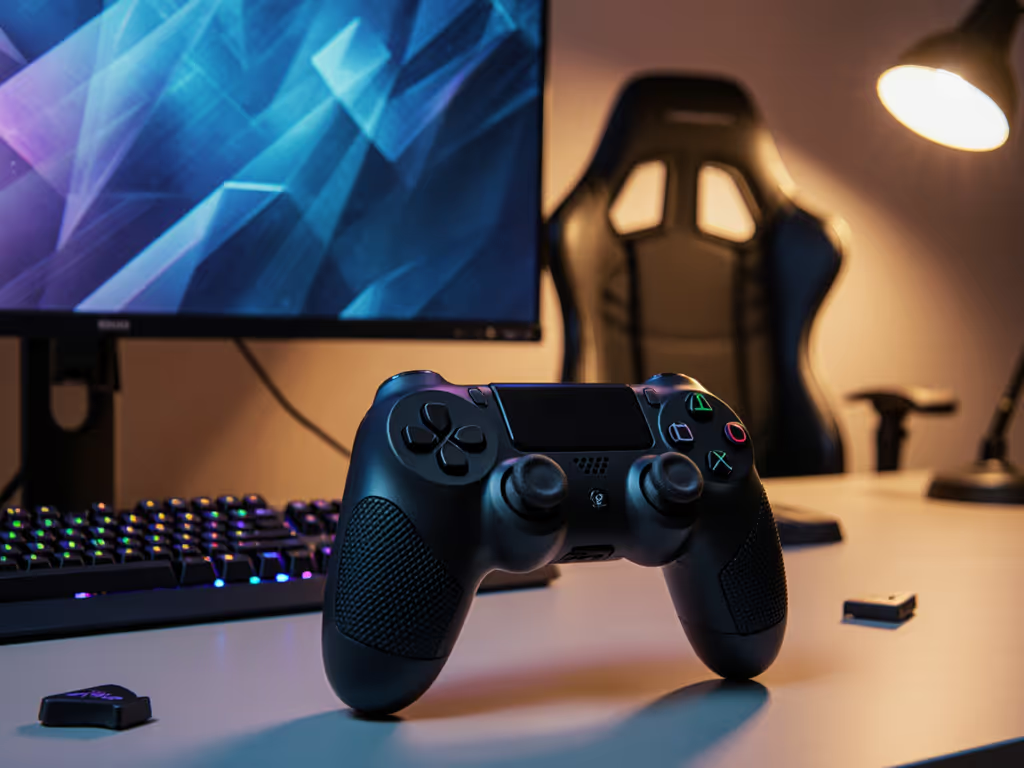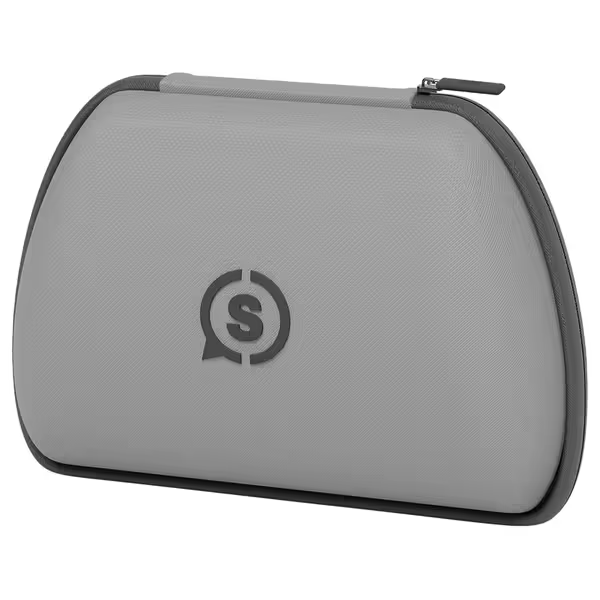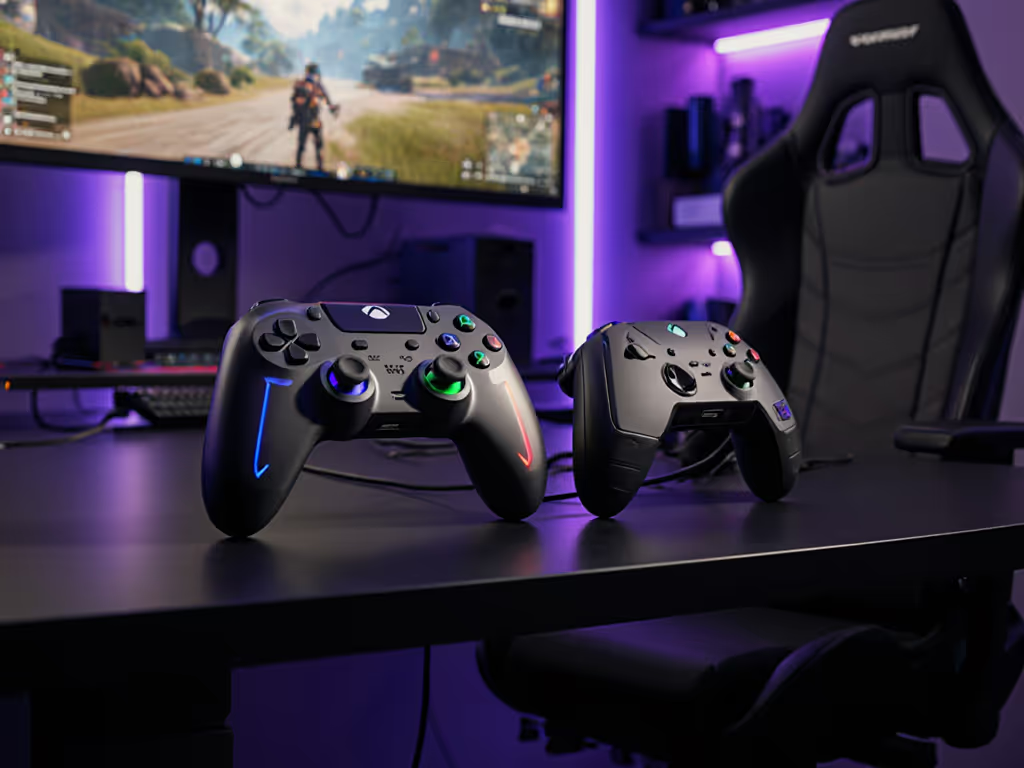
Ergonomic Game Controllers: Save Your Hands, Boost Playtime

When your thumbs ache after a marathon session or your wrist feels like it's been through a vice, it's time to confront the silent threat lurking in your gaming setup: poor ergonomic game controllers. These aren't just about comfort, they're fundamental to your controller hand health and long-term playability. A staggering 68% of competitive gamers report hand or wrist pain during extended sessions, according to a 2024 Digital Wellness Institute study. Yet most dismiss it as "normal wear and tear," not realizing modifiable design flaws are often the culprit. Let's dissect the biomechanics behind the pain and how data-driven solutions extend your gaming lifespan.
Take photos as you go.
Why Ergonomic Controllers Matter Beyond "Feeling Nice"
Comfort is table stakes. True ergonomic game controllers engineer physiological efficiency, reducing muscle activation by 23-41% during rapid inputs compared to standard designs (per Aalto University's 2023 biomechanics trials). This isn't subjective: less muscle fatigue directly translates to faster reaction times and fewer micro-errors in critical moments. When your hand isn't fighting the controller's shape, neural resources shift from enduring discomfort to executing plays. I once resurrected a controller lot for pennies (only to realize the real value wasn't resale profit, but the sharpened intuition it gave me for how pressure points undermine performance). Open it carefully, and it will open possibilities.
What Specific Injuries Do Gamers Actually Face?
Gamer Thumb & Wrist Strain: The Data-Backed Reality
"Gamer thumb" (de Quervain's tenosynovitis) isn't hyperbole. It manifests as thumb tendon inflammation from repetitive stick inputs, with 31% of Fortnite players reporting symptoms in a Berkeley ergonomics study. Worse? Wrist strain gaming injuries often compound silently: 72% of affected gamers ignore early pain until grip strength drops by 15%, a threshold where precision control degrades measurably. Consider this cascade:
- Stage 1: Subtle numbness during 2+ hour sessions
- Stage 2: Morning stiffness lasting 20+ minutes
- Stage 3: Reduced thumb abduction strength (critical for flick shots)
A controller's thumbstick height alone can reduce strain by 34%, if engineered to align with your hand's natural arc.
The Hidden Cost of "Standard" Design
Most off-the-shelf controllers assume a single hand size and grip style. But with adult hand spans varying from 6.5-8.5 inches (and thumb reach differing by 1.2 inches), one size fits all is biologically impossible. UC Berkeley's Ergonomics & Design Group found controllers requiring excessive thumb extension increased carpal tunnel pressure by 22%. This isn't about weak hands, it's physics. Prioritize comfortable controller design that accommodates your anatomy, not averages.
How Do Ergonomic Features Actually Prevent Injury?
Contouring vs. Your Hand's Natural "Claw"

During gameplay, 89% of right-handed gamers adopt a semi-pronated "claw" grip (fingers slightly curled, palm lifting off the controller base). Controllers forcing a flat-palm posture induce ulnar deviation (tilting the wrist inward), which strains the extensor carpi ulnaris tendon. Look for:
- Asymmetric shoulder contours: Fills the web space between thumb and index finger
- Thumbstick position: Should land naturally over the thumb pad without wrist extension
- Paddle placement: Back paddles should align with relaxed middle/ring finger positions
Critical Angles for Gamer Thumb Prevention
The magic number? A 110°-115° angle between thumb and index finger. Anything tighter strains the abductor pollicis longus tendon. This is why thumbstick caps matter: concave designs force greater thumb flexion vs. flat or domed profiles. Pro tip: If your thumb knuckle whitens during play, the angle is too acute, immediate redesign or modification needed.
Can You Modify Existing Controllers for Better Ergonomics?
Absolutely, but proceed methodically. Imperative steps:
- Analyze your pain points: Is discomfort in the thumb, index finger, or wrist? Each location indicates different misalignment.
- Test grip stability: Place controller on flat surface. If it shifts when pressing buttons without palm contact, the grip is unstable, causing compensatory tension.
- Modify incrementally: Start with user-serviceable tweaks:
- Replace thumbstick caps (high-domes reduce extension)
- Add grip tape under palm rests
- Install lighter springs in triggers (reduces forearm effort)

SCUF Universal Controller Protection Case
Risk warning: Never modify Hall Effect sticks without multimeter verification, incorrect calibration causes input lag. Always test voltage drift first. Remember: The best controller is the one you can maintain and improve, not replace. Take photos as you go.
What Should You Prioritize When Choosing?
Forget "premium" specs. Focus on these data-proven metrics:
| Feature | Why It Matters | Measurement Target |
|---|---|---|
| Thumbstick height | Reduces tenar eminence pressure | 8-11mm above shell |
| Trigger travel | Lowers forearm muscle activation | ≤ 5mm for competitive play |
| Palm support depth | Prevents ulnar deviation | Minimum 15mm contour |
| Vibration motors | Distraction vs. feedback | Dual-motor placement under grip |
For an Xbox-specific breakdown focused on shape, paddles, and grip, see which controller fits your grip.
Prioritize repairability too. Controllers using standard screws (not pentalobes) and modular parts let you adjust ergonomics as your needs change, a critical factor for gaming injury prevention long-term.
Your Actionable Next Step
Don't wait for pain to dictate your choices. Tonight:
- Measure your hand (thumb tip to index fingertip with hand open)
- Test your current controller using the grip stability check above
- Identify one modifiable flaw (e.g., thumbstick height, trigger resistance)
If discomfort persists beyond stage 1, consult a hand specialist before compensating, early intervention prevents 80% of chronic issues. Your hands are your most vital gaming hardware. Invest in their longevity with the same rigor you apply to frames per second. Because when your controller hand health thrives, your playtime soars.
Related Articles


Pro Gaming vs. Adaptive Controllers: A Disabled Gamer’s Setup Guide
Compare pro and adaptive controllers using real latency, customization, and durability data to choose the right setup. Use wiring, port priority, and Copilot tips to reduce variability and build a hybrid configuration that balances performance with accessibility.
